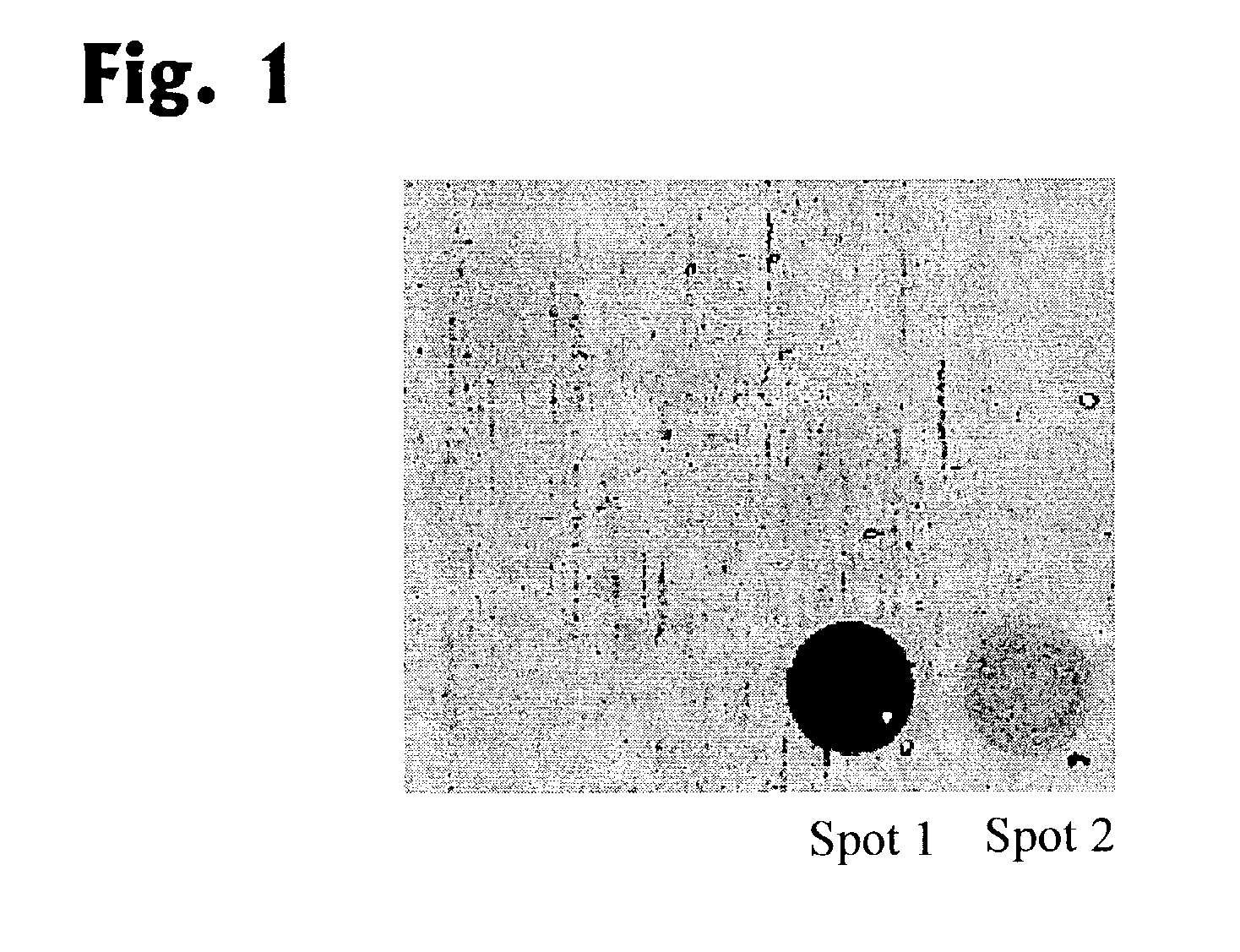Method for detecting cytosine methylation in DNA samples
a dna sample and cytosine technology, applied in the field of detecting 5methylcytosine in genomic dna samples, can solve the problems of incomplete loss of epigenetic information carried by the 5-methylcytosine during pcr amplification, and the inability to identify the 5-methylcytosine position by sequencing, and achieve the effect of improving detectability
- Summary
- Abstract
- Description
- Claims
- Application Information
AI Technical Summary
Benefits of technology
Problems solved by technology
Method used
Image
Examples
example 1
[0078]The following example relates to a fragment of exon 23 of the factor VIII gene in which a specific CG-position is to be analyzed for methylation.
[0079]In the first step, the fragment is amplified by primers of type A, namely by ATTATGTTGGAGTAGTAGAGTTTAAATGGTT (SEQ.-ID No.: 1) and ACTTAACACTTACTATTTAAATCACAACCCAT (SEQ.-ID No.: 2). The amplified DNA is hybridized to an oligonucleotide of type B (for example, GTTGGATGTTGTTGAGAAACG (SEQ.-ID No.: 3)) and elongated in a polymerase reaction with a labeled 2′,3′-didesoxythymidine triphosphat (type C 2). This elongation can only take place if a CG, that is, in the original genomic DNA sample, a methylated cytosine was present since otherwise, a mispairing at the 3′-end of the primer prevents the polymerase reaction. Thus, the methylation status of the specific cytosine to be analyzed decides on the elongation of the primer.
[0080]For control purposes, the reaction can be carried out with the primer GTTGGATGTTGTTGAGAAATG (SEQ.-ID No.: 4)...
example 2
[0081]The following example relates to a fragment of exon 23 of the factor VIII gene in which a specific CG-position is to be analyzed for methylation.
[0082]In the first step, the fragment is amplified by primers of type A, namely by ATTATGTTGGAGTAGTAGAGTTTAAATGGTT (SEQ.-ID No.: 1) and ACTTAACACTTACTATTTAAATCACAACCCAT (SEQ.-ID No.: 2). The amplified DNA is hybridized to an oligonucleotide of type B (for example, GTTGGATGTTGTTGAGAAACG (SEQ.-ID No.: 3)), which is immobilized to a solid phase surface with its 5′-end, and elongated in a polymerase reaction with a labeled 2′,3′-didesoxythymidine triphosphat (type C2). This elongation can only take place if a CG, that is, in the original genomic DNA sample, a methylated cytosine was present since otherwise, a mispairing at the 3′-end of the primer prevents the polymerase reaction. Thus, the methylation status of the specific cytosine to be analyzed decides on the elongation of the primer.
[0083]For control purposes, the reaction can be car...
example 3
[0084]The following example relates to a fragment of exon 23 of the factor VIII gene in which a specific CG-position is to be analyzed for methylation.
[0085]In the first step, the fragment is amplified by primers of type A, namely by ATTATGTTGGAGTAGTAGAGTTTAAATGGTT (SEQ.-ID No.: 1) and ACTTAACACTTACTATTTAAATCACAACCCAT (SEQ.-ID No.: 2). For this amplification, DNA treated with bisulphite was incubated for 5 min at 96° C., then denaturated by 40 cycles carried out for 55 sec at 96° C. each, incubated for 75 sec at 61.7° C. (annealing) and incubated for 100 sec at 72° C. (elongation). In a subsequent reaction (final extension) the reaction mixture is incubated for 15 min at 72° C. The amplified DNA is hybridized to the solid phase immobilized oligonucleotides AAAAACTACAAAAACTCT (SEQ-ID No.: 5) (spot 1 in FIG. 1) and to AAAACTACGAAAACTCT (SEQ-ID No.: 6 (spot 2 in FIG. 1). The elongation reaction affords 2′-desoxythymidine triphosphate (dTTP, as type C 1), 2′-desoxyguanosine triphosphate...
PUM
| Property | Measurement | Unit |
|---|---|---|
| elongation | aaaaa | aaaaa |
| fluorescence | aaaaa | aaaaa |
| mass | aaaaa | aaaaa |
Abstract
Description
Claims
Application Information
 Login to View More
Login to View More - R&D
- Intellectual Property
- Life Sciences
- Materials
- Tech Scout
- Unparalleled Data Quality
- Higher Quality Content
- 60% Fewer Hallucinations
Browse by: Latest US Patents, China's latest patents, Technical Efficacy Thesaurus, Application Domain, Technology Topic, Popular Technical Reports.
© 2025 PatSnap. All rights reserved.Legal|Privacy policy|Modern Slavery Act Transparency Statement|Sitemap|About US| Contact US: help@patsnap.com

